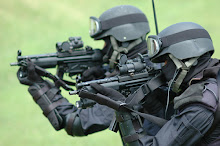
Project 1164, Atlant, Slava, Moskva, BLK-COM-1 and Krasina are all designations given to the first ship of a new class of Soviet Rocket Cruiser. As is true with all Soviet and modern Russian warship designs the new cruiser was known by a project number, in this case Project 1164 Russian Code Name Atlant. To the west analysts saw a new shape emerging in the slipway of 61 Kommunara Shipyard 445 in the city of Nikolayev on the Black Sea. Clearly it was the first of a new class of major Soviet combatant. The first NATO code name was BLK-COM-1 (Black Sea-Combatant-Design 1) and then briefly the NATO Code name Krasina. However, soon after NATO learned the Soviet name for the initial ship, Slava, a traditional Russian name meaning Glory, and the class was called the Slava Class Missile Cruiser.
Slava, renamed Moskva on July 7, 1995, was laid down on November 5, 1976. As the initial ship of a new class, building time was slower than those of the sisterships. She was launched three years later on July 27, 1979 and almost another four years would pass until Slava was commissioned on February 7, 1983. Moskva ex-Slava was the first of a planned six ship class of the most impressive surface action warship, with the exception of the Kirov Class RKR, to be built by the Soviet Union or the modern Russian Navy. Three are in service with Russian Fleet, Moskva in the Black Sea, Marshall Ustinov in the Northern Fleet and Varyag (Viking) ex-Cheryona Ukraina in the Pacific Fleet. A forth unit Admiral Flota Lobov has been renamed Ukrayina for service in the Ukrainian Navy. A fifth ship, Rossiya, then Oktyabrskaya Revolutsia and a sixth, Admiral Flota Sovetskogo Soyuza Gorshkov were both cancelled on October 4, 1990.
Displacing 9,380 tons (11,490 tons full load) the Moskva is a large ship, measuring 186.4m (oa) 170m (wl) in length, 20.8m (19.2m wl) in beam and 6.23m (8.4m at sonar) in draught. The class bristles with weapons systems and sensors, giving it a modern version of the Fierce Face look, so notable in Cold War Soviet warship designs. Overpowering all else are the sixteen P-500 Bazalt Surface to Surface Missile (SSM) canisters with their 4K80 missiles, NATO Code name SS-N-12 Sandbox. Designed to be carrier killers, the cruisers of the class were designed like the other classes of Soviet Rocket Cruisers (RKR) to offset the strength of the NATO fleets, the carrier. Behind the twin stacks are eight cylinders, resembling the end of a revolver handgun cylinder. Each cylinder has eight Fort (SA-N-6) Surface to Air (SAM) missiles. These missiles are 64S-300MPU/3R41 or 5V-55, NATO Code name Grumble missiles, in their vertically stored and launched (VLS) cylinders. Two cylinders for short range SAMs are found at the stern. One cylinder is on each side of the hangar with twelve B-203A VLS SA-N-4 Osa SAM with a total of 40 9MK-33M-5, NATO Code name Gecko Missiles. One twin Dual-Purpose 130mm/70 (AK-130) gun position is found at the bow and six CIWS AK-30/54 six-barrelled 30mm gatling guns for point AA defense. Rounding out the weapons fit are ten 533mm (5x2) torpedo tubes and two RBU-6000 ASW rocket mounts with a total of 144 rockets. Helicopter support comes in the form of one Ka-27PL ASW or one Ka-2RTS Helix targeting helicopter. Anyway you slice it, the Moskva packs a punch.
The cruisers of the class are powered by four gas turbines each producing 27,500 shp. There are also two cruise turbines, each of 10,000 shp for economical cruising on the two propeller design. The very hot exhaust from the turbines vents through the twin stack structure amidships. The designers of the class used this exhaust to power other auxiliary turbines. There are two exhaust gas cruise turbines each of 1,500 shp, two boost turbine exhausts and two gas turbine exhaust generators to provide steam to auxiliary turbines. Capable of 32.5 knots (30 knot sustained), Moskva has a range of 8,070 nm at 18 knots or 2,200 nm at 32 knots. The complement is 66 officers, 64 michmen (petty officers) and 355 enlisted men.
The Moskva (ex-Slava), which had been in refit at the Nikolayev yard since 1990-91, remained undelivered to the Russian Black Sea Fleet through the end of 1998. The Moskva was expected to return to service to replace the Admiral Golovko as the flagship of the Black Sea fleet.
http://flot.sevastopol.info/eng/ship/cruisers/slava.htm







